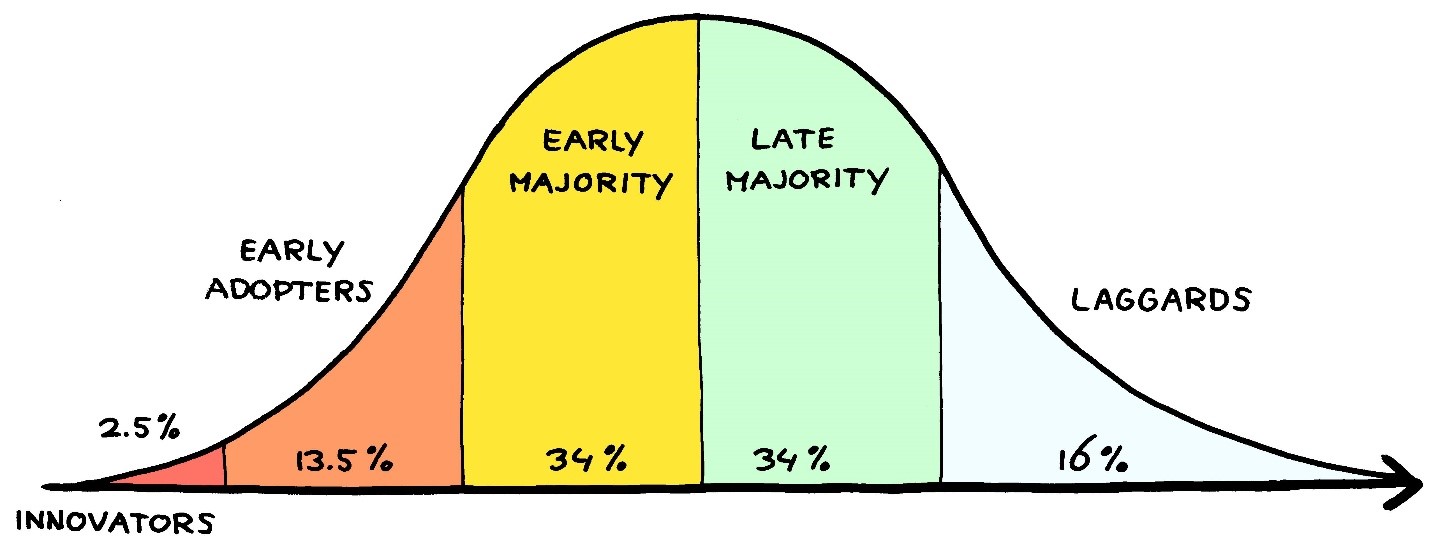Wes Cronkite
Wes Cronkite is a senior organizational change manager at M Powered Strategies in Washington, DC.

How can associations empower individuals to adopt transformative change? When it comes to improving your organization, it pays to reward stakeholders who are already listening to you.
Every association has to embrace change, whether it's broad economic changes in the industry or profession they support, internal changes to adapt to a new strategic direction, or operational changes as staff adjusts to a new technology. Change is common and universal. So why does this common problem keep so many executives up at night?
The change adoption curve is what most change leaders focus on when it comes to communicating and sequencing change. You have the innovators who make and mold the change, the early adopters who follow joyously, and the early majority who also join easily. Then, you have the late majority, or even the laggards or resisters, who will only join when there is no other choice, or even not at all.

Most communication approaches focus on shifting the change adoption curve (pictured above) to the left. But this is of limited effect, because it's estimated that 45-50 percent of stakeholders either buy into change late or not at all.
What if trying to convince the laggards to adopt change earlier isn't the most effective strategy? What if focusing your change efforts on your early adopters and positioning them to adopt the change more fully is actually more useful?
The Dunning-Kruger Effect is a cognitive bias whereby individuals who lack knowledge or competence in a given area feel more, not less, certain of their knowledge or competence. This means your late adopters and laggards are likely to resist the change because they are convinced that everything is already going great and that they know better than you do.
The Dunning-Kruger Effect a major reason why change is so difficult to manage successfully. But you can adapt your change management strategy and find new ways to overcome the resistance.
If you position your change such that early adopters gain benefits that the laggards don't, then you put your change strategy in a better position to succeed.
Many laggards and resisters can't change their cognitive biases, and therefore they won't ever desire to change when their bias tells them not to. But cognitive biases exist to feed the ego, and one psychological pull even stronger than appealing to the ego is the instinct for survival.
Your strategy should be to empower those who adopt the change early. If you position your change such that early adopters gain benefits that the laggards don't, then you put your change strategy in a better position to succeed. Here are a few tactics to encourage change adoption in your organization:
Communicate early and often. The early stage of most planning centers on communicating everything that is about to happen and why. Early communication is even more important than you might realize. You need to gain a critical mass of early adopters and increase your number of early-majority stakeholders. The more people you have on board early, the easier it's going to be to put pressure on those who are already tuning you out.
Define the change value for participants. While change is scary for many, some people are naturally drawn to it. Many of those folks make up your early adopters, but their adoption can be counterproductive if they don't perceive the value of the change. Give early adopters benefits, then let them be your ambassadors. The word-of-mouth communication among your stakeholders will always affect your change curve.
Make your change adopters the owners of change. Another accelerating factor is diversifying ownership of the change. This is particularly useful when the change is a wholly internal one, and your staff members are the ones who need to adopt it.
Let's say that you're changing your payroll process, and you need to switch to a new time-entry system. You probably can't just cut off paychecks to those who don't start entering time in the new system. If your managers in each business unit have a requirement to report on payroll compliance each week, and that requirement is tied to resourcing, there is now a structure in place where laggards have pressure to adopt, since the entire team is now responsible if the change isn't adopted.
Change isn't going to become easy overnight. Laggards and resisters aren't going anywhere, and you can't change stakeholders' cognitive biases. The good news is that your stakeholders who adopt the change are actually your best resource. Set up structures and mechanisms that reward them and showcase those rewards to everyone. You'll create a culture where change is welcomed and valued.